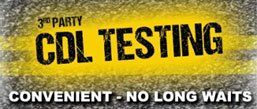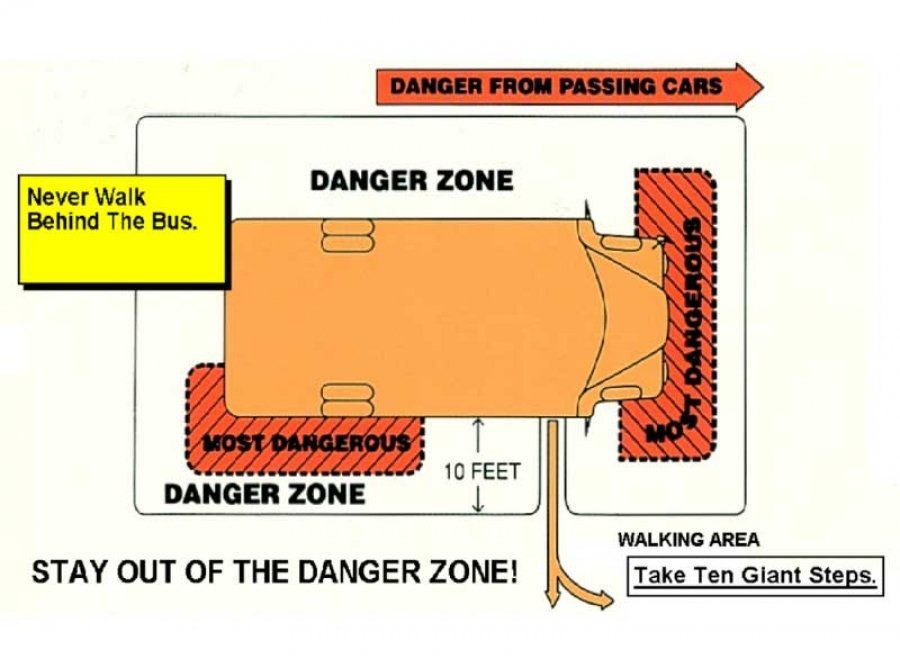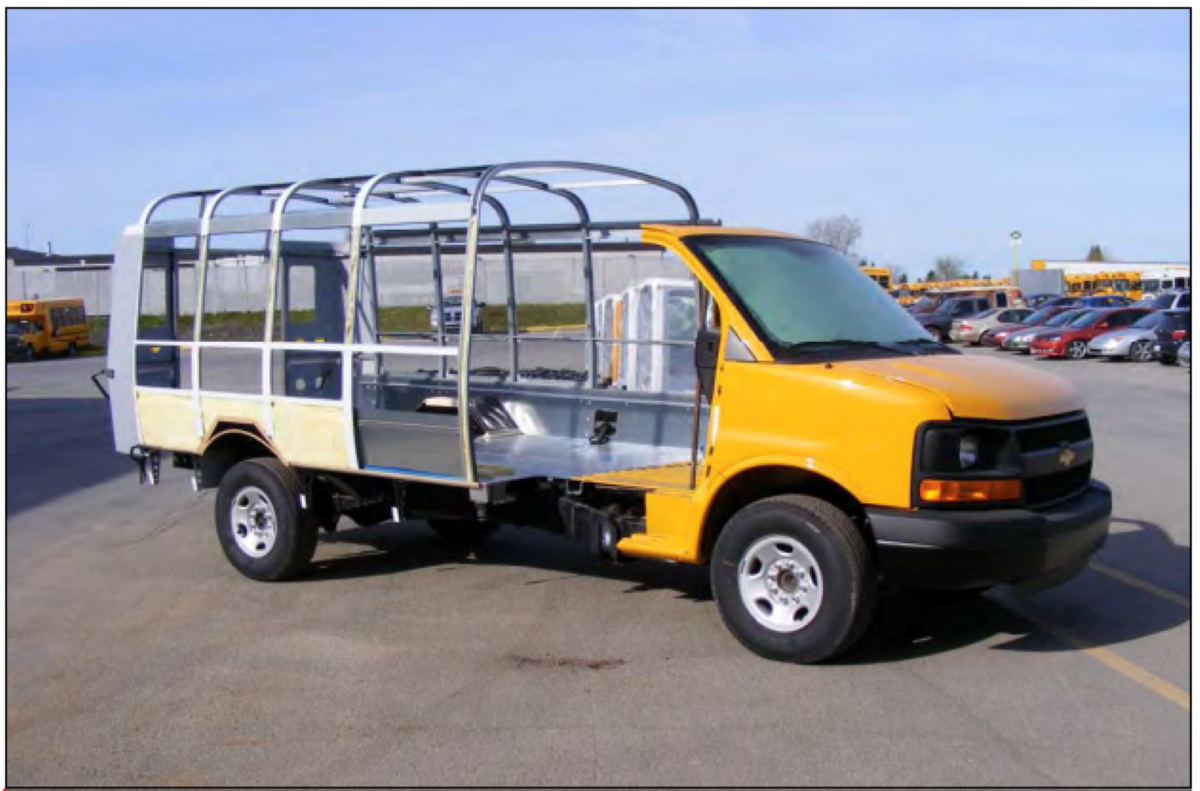Safety is Our Number One Concern
Safety First | Over 20 Years of Experience | Locally and Family Owned
Safety FirstOver 20 Years of ExperienceLocally and Family Owned
Extensive Driver Training Program
“Safety” is the first priority at Monark Student Transportation Corp! With a comprehensive training program developed to ensure that our drivers receive continuing education on all matters pertaining to school bus driving and safety, Monark Student Transportation Corp. is at the top of its game!
Through our extensive driver training programs, all of our drivers are educated and evaluated by a Monark Student Transportation Corp. driver trainer twice per year. These evaluations assist us in maintaining the highest levels of driver competency. A minimum of six mandatory safety meetings are held throughout the school year to keep our drivers abreast of current safety and training issues. In addition, there is a dedicated and informed safety team at each of our Western Pennsylvania locations, comprised of designated safety officers and no less than two Monark Student Transportation Corp. driver trainers.
- Monark Student Transportation Corp. operates a fleet of marked safety vehicles. These vehicles check the safety of bus routes and bus stops and can also follow the buses in order to evaluate the driver.
- Each Monark Student Transportation Corp. driver is evaluated annually in addition to their pre-employment and 90-day evaluation.
- Monark Student Transportation Corp. will not employ anyone under the age of 21 as a driver.
- Drivers must attend mandated reporters class and safety meetings.
- Drivers are trained on armed intruder situations.
- We run Motor Vehicle Records (MVR) on every driver yearly. In addition, we run an MVR every time a driver is selected for an alcohol / drug screening.
- Drivers must use mirror grids to ensure mirrors are adjusted properly for maximum visibility and safety.
- Drivers receive hands on operation training of wheel chair lifts.
- Monark Student Transportation Corp. office personnel are certified in Impaired Driver Identification.
For more information about our safety programs, call us.
Safety Review Reports
In January 2008, eight passengers died after the 15‐passenger van they were travelling in was hit, at highway speed, by a tractor‐trailer near Bathurst, New Brunswick. On September 30, 2010, former Transport Canada Minister Strahl committed the department to conducting a crash test of a 15‐passenger van, as requested by a lobby group of concerned citizens
with a strong personal interest in van and bus safety for student transportation.
View Report
The 15‐passenger van is a preferred mode of transportation for a broad spectrum of applications and passenger types including school or senior outings, community events, and various shuttle services. An alternative mode of transportation for school-related activities is the multi‐functional bus (MFAB). The structure of these buses is similar to that of small school buses except that they are not equipped with certain safety features, like stop lamps and extendable stop signs, that are required for the secure embarkation and disembarkation of school children.
The intention of the crash-worthiness testing was not to replicate the tragic Bathurst collision. Because of the high speed at which the collision occurred (the closing speed was estimated by the collision investigators as being about 160 km/h) and the extreme difference in size between the striking transport truck and the 15‐passenger van in question (the mass of the truck at the time of impact was estimated by the investigators to be more than five times that of the van), the crash was likely far too catastrophic for any known crash-worthiness countermeasures to have prevented the loss of life.
The objective of the test program, therefore, was to compare the protection available to restrained occupants of a 15‐passenger van with that available to restrained occupants in an MFAB during a severe side impact crash. A bullet vehicle was used during the test, because that is representative of the type of vehicle typically associated with causing serious injury during side impact collisions in the field. The bullet vehicles were of similar mass to both struck vehicles. These collisions nevertheless exceeded the severity of regulatory compliance and consumer‐focused vehicle rating programs used worldwide.
The report below describes the test methodology for the paired test program, presents the results of the crash tests, and discusses the implications of the findings with respect to possible countermeasures.
Stay Out of Danger Zones
School Bus Constructed Vehicle
Our School Bus Constructed Vehicles or SBCVs are built to full school bus construction design and can be operated without a commercial driver license. Our 9-passenger school bus constructed vehicle (SBCV) meets the exact same federal motor vehicle safety standard requirements for school construction as our full-size school buses! This gives you peace of mind that you can't get from a passenger van.
The Ford E-250 van is a common vehicle that many contractors use to transport your school children, but there is a safer way! Monark Student Transportation Corp. has the answer.
SBCV is a 9-passenger school bus. The only difference between it and a “typical” school bus is no 8-way warning light system. In smaller capacities, there are children being transported in the same van a plumber or carpenter uses and that is not acceptable to us.
We bring the level of safety to these vehicles so that every child is afforded the same level of protection no matter what Monark bus they ride, whether an 84-passenger Blue Bird All American or a 9-passenger SBCV.
School buses are the safest means of ground transportation available.
Safety Feature Checklist: The SBCV student buses that Monark Student Transportation Corp. provides have a completely gasketed steel body frame that ensures all exterior elements remain outside the passenger compartment. Heavy-gauge steel side impact barriers provide superior side impact protection. They also include the exact same rear emergency exit as found on a full-size school bus.
- Joint ad rollover strength matches that of full-size school bus
- Compartmentalization is the same as on full-size school bus
- One-piece roof bows, floor-line to floor-line
- Fully padded school bus seat and seat frames
- School bus headroom, same as on full-size bus
- Rear emergency exit door and entrance door
- School bus windows and mirrors
- School bus side body rub-rails
- Heavy-gauge steel side-impact barriers and rub-rails
- Right-front corner safety-view window and mirrors
- Side-wall construction is the same as on full-size school bus
Important Tips for Parents and Students
As parents, you are an important part of the Total Safety Awareness Program for students who travel to and from school by school bus. Although drivers of ALL vehicles are required to stop for a school bus when it is stopped on a highway or roadway (with its side arm and stop arm out) while loading or unloading passengers, children should not rely on them to do so. The National Safety Council encourages parents to teach their children about proper school bus safety.
Download School Bus Safety Activity Book
Here’s How You Can Help:
- Have your children wear bright, contrasting colored coats or put a high-visibility reflective tape on coats and backpacks.
- Help your children to leave on time. Allow for weather and plan to arrive at the bus stop 10 minutes before the scheduled pickup time.
- If possible, accompany your children to the bus stop.
- Remind your children to walk on the sidewalks. If there are no sidewalks, walk single file, facing traffic and as close to the edge of the road as possible.
- Teach your children to stop, look left, right, and left again before crossing the street.
- Tell your children to stand 15 feet (nine giant steps) away from the street when waiting for the bus.
- Encourage your children to secure loose drawstrings or other objects that may get caught in the handrail or door of the bus as they exit.
- If transportation other than the assigned bus is desired, parents are responsible for making other accommodations, due to space limitations, assigned seating, and accountability.
- Instruct your children to stop and look before hurrying away from the bus as they exit at the end of the day.
- When you meet your child at the bus stop after school, wait on the side where the child will be dropped off.
Students can benefit from learning to become safe pedestrians and passengers.
Boarding, Riding, and Exiting the Bus:
- Keep the roadway clear of books, clothing, and other articles and never play in the path of traffic.
- Fighting at bus stops or while riding the bus will not be tolerated and will be reported to the school principal.
- Do not run alongside the bus when the bus is moving. Wait until the bus stops, then walk to the door and board the bus in an orderly manner. Do not push or shove.
- Always cross the street in front of the bus.
- Hold the handrail while going up and down the stairs.
- Passengers are permitted to leave the bus only at their designated stop. Any change must be made with the parent's or guardian's request in writing and must be approved by the signature of the school principal.
- Never cross the road at the rear of a stopped school bus. If a student lives on the opposite side of the road from the bus stop, the student should cross in front of the bus and the bus driver will give the child a signal that it is safe to cross.
- Make sure that drawstrings and other loose objects are secure before boarding or exiting the bus so that they do not get caught on the handrail or the door.
- If you drop something near the bus, be sure to tell the bus driver before you attempt to pick it up, so they will know where you are.
- Respect the "Danger Zone,: which is ten feet wide on all sides of the bus. Always remain 10 steps away from the bus to be out of the "Danger Zone" and where the driver can see you.
- Never speak to strangers at the bus stop and never get into the car with a stranger. Be sure to tell your parents, the bus driver, or the principal immediately if a stranger tries to talk to you or pick you up.
- Always remain seated when the bus is in motion.
- Obey the driver's instructions. The driver of a school bus is in complete charge of the passengers while they are aboard.
- Always speak in a quiet voice while on the bus so the driver will not be distracted.
- Never throw things on the bus or out of the windows. Keep the aisles clear at all times. Feet should be directly in front of you on the floor and book bags should be kept on your lap. Large instruments or sports equipment should not block the aisle or emergency exits.
- Do not tamper with the emergency door, fire extinguisher, or other equipment on the bus.
- Do not extend arms, legs, or heads out of the bus.
- Do not deface the bus. Seat coverings must not be damaged in any manner.
- Keep the bus clean. Do not throw trash on the floor.
- Remember that smoking, eating, and drinking are not permitted on the school bus.
- Profanity, obscene gestures, or violence of any kind is prohibited on the school bus and will not be tolerated.
Special Needs Students
Parents and loved ones of special needs students can rest assured that at Monark Student Transportation Corp., we take every precaution to make certain that the safe transportation of your child is our number one priority.
Each of our drivers who operate a lift-equipped vehicle has had appropriate and continuing training on the safe operation of the lift and wheelchair tie-downs, etc.
In addition, when any student has an Individual Education Program (IEP), Monark Student Transportation Corp. will make the necessary arrangements (e.g. inclusion of a monitor, training in the use of an Epi-Pen, etc.) to ensure the safety and comfort of our special needs passengers.





Share On: